Review Article Open Access
Application of Bioremediation on Solid Waste Management: A Review
| Tiwari Garima* and Singh SP | |
| School of Energy and Environmental studies, Devi Ahilya University Indore, India | |
| Corresponding Author : | Tiwari Garima School of Energy and Environmental studies Devi Ahilya University Indore, India Tel: 0731 252 1887 E-mail: pooja.veronica@gmail.com |
| Received May 22, 2014; Accepted September 01, 2014; Published September 03, 2014 | |
| Citation: Garima T, Singh SP (2014) Application of Bioremediation on Solid Waste Management: A Review. J Bioremed Biodeg 5:248. doi:10.4172/2155-6199.1000248 | |
| Copyright: © 2014 Garima T, et al . This is an open-a ccess article distributed under the terms of the Creative Commons Attribution License, which permits unrestricted use, distribution, and reproduction in any medium, provided the original author and source are credited. | |
Related article at Pubmed Pubmed  Scholar Google Scholar Google |
|
Visit for more related articles at Journal of Bioremediation & Biodegradation
Abstract
Bioremediation is an alternative way to manage or to degrade the waste. It is eco-friendly and much cost effective as compared to other traditional technique such as incineration. The main purpose of this paper is to pay more attention towards bioremediation. This paper outlines the different processes of bioremediation, their limitation and the process to remove different heavy metals, and other waste which is harmful to human beings. When metals are treated with microbes it get accumulated or attached on microbial membrane. And after that it can be extract from microbes through cell fragmentation.
| Keywords | ||||||
| Bioremediation; Bioventing; Biosparging; Bioagumentation; Biopiling | ||||||
| Introduction | ||||||
| ‘Earth’ is rich wealth of natural resources such as land, forests, wildlife, soil, air, water, wind, animals and plants. The race begins when humans started living a stable life rather than a nomadic life. But due to civilization the use and over use, and misuse has led to depletion of various natural resources to an extent that today half of our natural resources are either depleted or at the edge of depletion [1]. | ||||||
| And due to civilization, urbanization and industrialization large number of wastes is generated which is dumped into the environment annually. Approximately 6×106 chemical compounds have been synthesized, with 1,000 new chemicals being synthesized annually. Almost 60,000 to 95,000 chemicals are in commercial use. According to third world network reports, more than one billion pounds (450 million kilograms) of toxins are released globally in air and water. The contaminants causing ecological problems leading to imbalance in nature is of global concern. At the international level the researchers of the world are trying to overcome on the depletion of natural resources by several means, however very little attention is given to their words and continues to use them without caring the adverse consequences. The dumping of hazardous waste into the environment like rubber, plastics, agricultural waste, and industrial waste is harmful to living creature. | ||||||
| Solid-waste management is a major challenge in urban areas throughout the world. Without an effective and efficient solid-waste management program, the waste generated from various human activities, can result in health hazards and have a negative impact on the environment. Continuously and uncontrolled discharge of industrial and urban wastes into the environmental sink has become an issue of major global concern [2,3]. The industrial and anthropogenic activities had also led to the contamination of agricultural lands which results the loss of biodiversity. Although the use of pesticides, herbicides increases the productivity of crop but also increase the contamination in the soil, water and air [4]. | ||||||
| Bioremediationis not only a process of removing the pollutant from the environment but also it an eco-friendly and more effective process [5]. The pollutants can be removes or detoxify from the soil and water by the use of microorganism, known as bioremediation [6,7]. The purpose of bioremediation is to make environment free from pollution with help of environmental friendly microbes. Bioremediation broadly can be divided in two category i.e In-situ bioremediation and ex-situ bioremediation. | ||||||
| This study reviewed the salient features of methods of bioremediation, its limitations and recent developments in solid waste management through bioremediation. | ||||||
| In situ bioremediation provide the treatment at contaminated sites and avoiding excavation and transport of contaminants, means there is no need to excavate the water or contaminated soil for remediation. There is a biological treatment of cleaning the hazardous substances on the surface. Here the use of oxygen and nutrient to the contaminated site in the form of aqueous solution in which bacteria grow and help to degrade the organic matter. It can be used for soil and groundwater. | ||||||
| Generally, this technique includes conditions such as the infiltration of water containing nutrients and oxygen or other electron acceptors for groundwater treatment [8]. Most often, in situ bioremediation is applied to the degradation of contaminants in saturated soils and groundwater. It is a superior method to cleaning contaminated environments since it is cheaper and uses harmless microbial organisms to degrade the chemicals. Chemotaxis is important to the study of in-situ bioremediation because microbial organisms with chemotactic abilities can move into an area containing contaminants. So by enhancing the cells' chemotactic abilities, in-situ bioremediation will become a safer method in degrading harmful compounds. This in-situ bioremediation further sub divided into following category | ||||||
| Bioventing | ||||||
| It is a technique to degrade any aerobically degradable compound. In bioventing the oxygen and nutrient like nitrogen and phosphorus is injected to the contaminated site [9]. The distribution of these nutrient and oxygen in soil is dependent on soil texture. In bioventing enough oxygen is provided through low air flow rate for microbes. Bioventing is nothing but it is pumping of air into contaminated soil above the water table through well which sucked the air. Bioventing is more effective if the water table is deep from the surface and the area having high temperature. It is mainly used for the removal of gasoline, oil, petroleum etc. The rate removal of these substances is varied from one site to another site. This is just because of the difference in soil texture and different composition of hydrocarbons (Figure 1 and Table 1). | ||||||
| Biosparging | ||||||
| In biosparging air is injected below the ground water under pressure to increase the concentration of oxygen. The oxygen is injected for microbial degradation of pollutant. Biosparging increase the aerobic degradation and volatilization [10]. There must be control of pressure while injecting the oxygen at the contaminated site to prevent the transfer of volatile matter into the atmosphere. In it the cost can be reduce by reducing the the diameter of injection point. Before injecting the oxygen there should know about soil texture and permeability. This technology was applied to a known source of gasoline contamination in order to quantify the extent of remediation achieved in terms of both mass removed and reduction in mass discharge into groundwater. Biosparging is effective in reducing petroleum products at underground storage tank (UST) sites. Biosparging is most often used at sites with mid-weight petroleum products (e.g., diesel fuel, jet fuel); lighter petroleum products (e.g., gasoline) tend to volatilize readily and to be removed more rapidly using air sparging. Heavier products (e.g., lubricating oils) generally take longer to biodegrade than the lighter products, but biosparging can still be used at these sites. Even after that there are some disadvantages is also- | ||||||
|
||||||
| Bioagumentation | ||||||
| Microorganisms having specific metabolic capability are introduced to the contaminated site for enhancing the degradation of waste. At sites where soil and groundwater are contaminated with chlorinated ethenes, such as tetrachloroethylene and trichloroethylene, bioaugmentation is used to ensure that the in situ microorganisms can completely degrade these contaminants to ethylene and chloride, which are non-toxic. Monitoring of this system is difficult (Figure 2). | ||||||
| Ex-Situ Bioremediation | ||||||
| The treatments are not given at site. In ex situ, the contaminated soil excavate and to treat it at another place. This can be further sub divided into following categories | ||||||
| Biopiling | ||||||
| It is a hybrid form of composting and land farming. The basic biopile system includes a treatment bed, an aeration system, an irrigation/nutrient system and a leach ate collection system. For proper degradation there should be control of moisture, heat, nutrients, oxygen, and pH. The irrigation system is buried under the soil and provides air and nutrient through vacuum. To prevent the run off the soil is covered with plastic and due to which evaporation and volatilization is also prevented and promote the solar heating. Biopile treatment takes 20 to 3 month to complete the procedure [11]. | ||||||
| Landforming | ||||||
| In land forming make a sandwich layer of excavated soil between a clean soil and a clay and concrete. The clean soil at bottom and concrete layer should be the upper most layers. After this allow it for natural degradation. In it also provide oxygen, nutrition and moisture and pH should also maintain near the pH 7 by using lime. Land forming is useful mainly for pesticides. | ||||||
| Compositing | ||||||
| Compositing is a process in which microorganism degrades the waste at elevated temperature that is ranges from 55- 65. During the process of degradation microbes release heat and increase the temperature which leads to the more solubility of waste and higher metabolic activity in composts. | ||||||
| In windrow composting remove the rocks and other larger particles from excavated contaminated soil [12]. The soil is transported to a composting pad with a temporary structure to provide containment and protection from weather extremes. Amendments (straw, alfalfa, manure, agricultural wastes and wood chips) are used for bulking agents and as a supplemental carbon source. Soil and amendments are layered into long piles known as windrows (Table 2). | ||||||
| Wastes are two type i.e. inorganic waste and organic waste. The inorganic waste includes mainly heavy metals and organic waste includes agricultural waste, plastics, rubbers etc. | ||||||
| Although researcher had found the variety of the ways by which we can degrade the solid waste.But bioremediation also making its leap to tackle the problem of heavy metals associated with different categories of waste with the help of microorganism (Figure 3). | ||||||
| Bioremediation of Heavy Metals | ||||||
| The atomic weight and density of heavy metal is high as compare to other element. There is more than 20 heavy metals, only few of them such as Cadmium (Cd), Cupper (Cu), Argon (Ar), Silver (Ag), Chromium (Cr), Zinc (Zn), Lead (Pb), Uranium (Ur), Ra, Nickel (Ni) etc. is considered, due to their toxicity. The contaminations of soil through heavy metals become a major problem among all other environmental problems. These heavy metals contaminate not only the soil but also ground water through leaching. The removal of heavy metal is very important due to their potential of entering into the food chain causing adverse effect to human beings which accumulate into the body. These metals can also be removed by the use of various biological agents like yeast, fungi, bacteria, and algae etc. which act as bio sorbent for sequestering the metals. It can sequester dissolved metal ions out of dilute complex solutions very quickly and which is more effective and efficient. Hence it is an ideal candidate for the treatment of high volume and low concentration complex wastewaters [13].The property of microorganism to accumulate/sequester the metal is first of all observed with toxicological point of view [14]. Biosorption is nothing but it is a reaction between the positive charged heavy metals and negative charged microbial cell membrane, in which metals are then transported to cell cytoplasm through cell membrane with the aid of transporter proteins and get bio accumulated. Biosorption of metal ions strongly depends on pH. The biosorption of Cr, Zn, Ni and Pb by p. chrysogenum was inhibited below pH 3.0. It was observed that biosorption of Cd by various fungal species is at very sensitive pH (Table 3). | ||||||
| It has been observed that Cd2+ Cr6+ and Zn2+ removal activity ranged between 85% and 60%, with intracellular accumulation as predominant mechanisms in most of the cases. Pseudomonas aeruginosa and Aspergillus nigerare the species which remove almost every toxic heavy metal (Figure 4). | ||||||
| Bioremediation of Rubber Waste | ||||||
| In solid waste, about 12% constitute of rubber. A rubber can neither degrade easily nor recycled due to its physical composition [15]. Tire is composed of synthetic polymers and high grade of black carbon is also there [16]. The reason behind this black carbon is to increase the strength of that rubberor tire [17]. A major environmental problem arises due to rubber, because on burning it gives a large number of toxic fumes along with carbon monoxide [18]. Even after that the use of rubber is increasing day by day, of which maximum rubber comes from vehicles i.e. 65% [19]. Its toxic chemical composition like zinc oxides inhibit the growth of sulfur oxidizing and other naturally occurring bacteria, which leads slow natural degradation of rubber [20]. So for degradation of rubber first of all remove the toxic component of rubber through fungi like Recinicium bicolour. After that this rubber can be devulcanized by sulfur reducing or oxidizing bacteria like Pyrococcus furiosus & Thiobacillus ferroxidans. These devulcanized rubbers can be recycled [21]. The calorific value of rubber is same as coal that is of about 3.3 x 104 KJ/kg [22]. So control combustion of rubber can be a best waste management [15] and the heat can be use for energy generation. | ||||||
| Bioremediation of Agricultural Waste | ||||||
| Each year, human, livestock, and crops produce approximately 38 billion metric tons of organic waste worldwide. Disposal and environmental friendly management of these wastes has become a global priority. Therefore, much attention has been paid in recent years to develop low-input and efficient technologies to convert such nutrientrich organic wastes into value-added products for sustainable land practices. However these can be managed through vermicomposting. A vermicomposting is nothing but a joint action between the earth warms and microorganism. Here microorganism helps in degradation of organic matter and earth warm drives the process and conditioning to the substrate and altering the biological activity [23,24]. | ||||||
| Several epigeic earthworms, e.g., Eisenia fetida (Savigny), Perionyx excavatus (Perrier), Perionyx sansibaricus (Perrier), and Eudrilus eugeniae have been identified as detritus feeder and can be used potentially to minimize the anthropogenic waste from different source [25]. Whereas agricultural by products like animal dung, crop residue etc. are good source of nutrient for the plants. In India, according to conservative estimation approximately 600 to 700 million tons of agricultural waste is available. This huge quantity of waste can be converted to boifertilizer by vermicomposting. Vermicomposting often results in mass reduction, shorter time for processing, and high levels of humus with reduced phytotoxicity in ready material [26]. A variety of combinations of crop residues and cattle manure were used in vermicomposting trials to obtain a value-added product, i.e., vermicomposting, at the end, the higher concentrations of plant nutrients in end products indicate a potential for using agriculture wastes in sustainable crop production [27]. | ||||||
| Degradation of Xenobiotic Compounds. | ||||||
| Xenobiotics are organic in nature and many of the xenobiotic compounds released into the environment and accumulate because they are only degraded very slowly and in some cases so slowly as to render them effectively permanent (Figure 5). | ||||||
| A short summary of some cardinal issues of significance for all Xenobiotics has been given bellow. | ||||||
| • The degradation of xenobiotic compounds are depends upon microbial activity. Some example includes degradation of parathion | ||||||
| • It should be examine the degradation pathway of xenobiotic compound when single substrate is available there. | ||||||
| • In absence of oxygen there should be an alternative electron accepter nitrate, sulphate, selenate, carbonate etc. | ||||||
| • There are no microbes or group of microbes that degrade all compounds. So there should be a group of organism, metabolically versatile that is applicable for the degradation of large no of compound. | ||||||
| The degradation of xenobiotic compound through white rot fungi can take place with certain enzymes. It has been reported that the degradation of TNT by non-ligninolytic strains of P. chrysosporium (Table 4). | ||||||
| Limitation of Bioremediation | ||||||
| Some common environmental limitations to biodegradation are related to hazardous chemical wastes which posses’ high waste concentrations and its toxicity. Because some time this toxicity either inhibits the growth of microorganism or some time kill them. For proper growth of microorganism it requires of favorable pH condition and sufficient amount of mineral nutrients and also requires temperature on which maximum microbes can survive i.e. 20°C to 30°C. Once the limitations by environmental conditions are corrected, the ubiquitous distribution of microorganisms, in most cases, allows for a spontaneous enrichment of the appropriate microorganisms. In the great majority of cases, an inoculation with specific microorganisms is neither necessary nor useful. Besides all these some other factors are also effect the bioremediation such as solubility of waste, nature and chemical composition of waste, oxidation – reduction potential of waste and microbial interaction with this. Hence the researchers should search genetically different type of microbes which can also work on slightly adverse condition. Therefore, bioremediation is still considered as a developing technology to regulate the day to day environmental problems faced by man residing in an area. | ||||||
| Conclusion | ||||||
| Although researcher had found the variety of the ways by which we can degrade the solid waste. But bioremediation also making its leap to tackle the problem associated with different categories of waste with the help of microorganism. From this paper we can say that there were less work has been done on rubber waste degradation. So there should pay more attention towards rubber waste. | ||||||
References
|
Tables and Figures at a glance
| Table 1 | Table 2 | Table 3 | Table 4 |
Figures at a glance
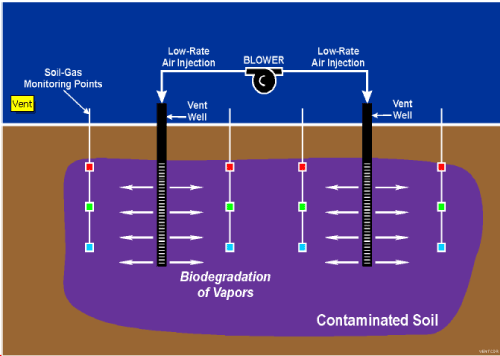 |
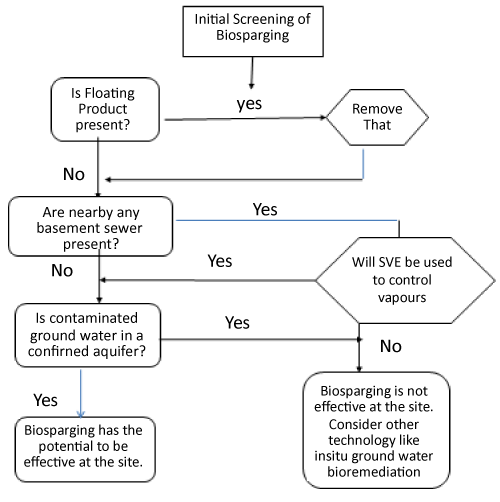 |
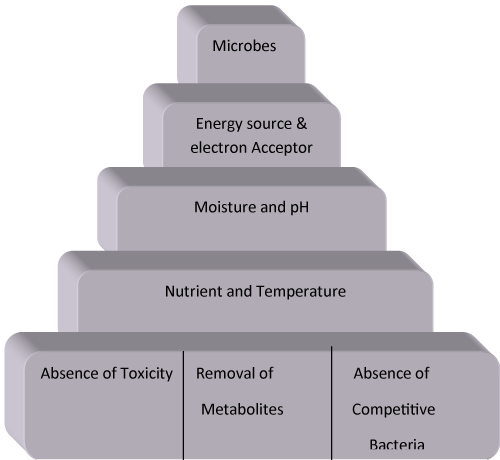 |
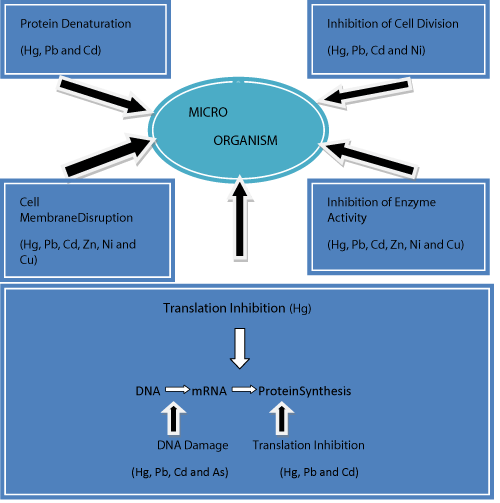 |
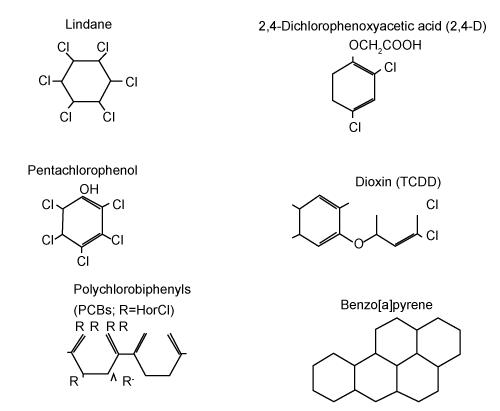 |
| Figure 1 | Figure 2 | Figure 3 | Figure 4 | Figure 5 |
Relevant Topics
- Anaerobic Biodegradation
- Biodegradable Balloons
- Biodegradable Confetti
- Biodegradable Diapers
- Biodegradable Plastics
- Biodegradable Sunscreen
- Biodegradation
- Bioremediation Bacteria
- Bioremediation Oil Spills
- Bioremediation Plants
- Bioremediation Products
- Ex Situ Bioremediation
- Heavy Metal Bioremediation
- In Situ Bioremediation
- Mycoremediation
- Non Biodegradable
- Phytoremediation
- Sewage Water Treatment
- Soil Bioremediation
- Types of Upwelling
- Waste Degredation
- Xenobiotics
Recommended Journals
Article Tools
Article Usage
- Total views: 56363
- [From(publication date):
November-2014 - Apr 03, 2025] - Breakdown by view type
- HTML page views : 48396
- PDF downloads : 7967
